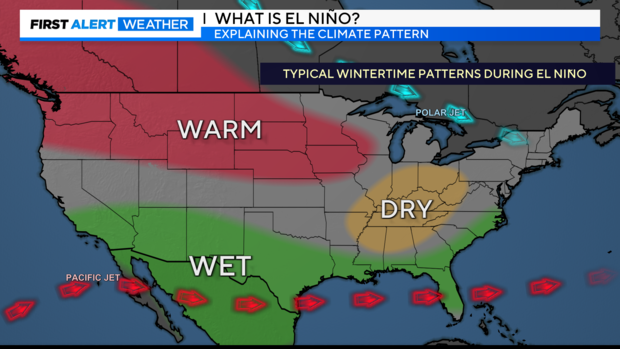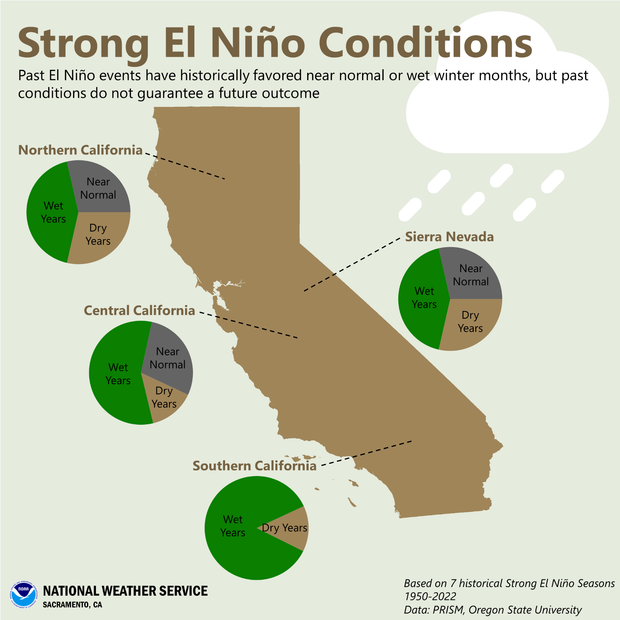El Niño set to strengthen this winter, what does it mean for Northern California?
SACRAMENTO - El Niño conditions continue to strengthen and some may see the return of an active winter. But could Northern California see any impacts?
In a recent El Niño forecast by the National Oceanic Atmospheric Administration (NOAA), there is a greater than 95% chance that El Niño continues across the Northern Hemisphere through the winter into 2024. The chance of a "strong" El Niño has also increased from 66% in August to now 71% in September.
NOAA reports that the current state of El Niño is strong, with sea surface temperatures 1.6 degrees Celsius above average.
El Niño, the warm phase of the El Niño-La Niña Southern Oscillation pattern, is a major driver of weather worldwide and is often associated with hotter global temperatures and wetter conditions in portions of California.
In El Niño years, warmer waters in the eastern Pacific create an active jet stream over the southern U.S., leading to higher chances of cool and wet weather in the southwest and warmer and drier weather in the northwest, during the winter.
But where does Northern California fall? Right in the in-between.
Michelle Mead, meteorologist in charge at the National Weather Service office in Sacramento, said El Niño is not a sure thing for a wet winter in Northern California.
"It definitely tilts the odds in the favor of a wetter winter, especially in Southern California, not so much in Northern California," Mead said.
But as climate data shows, no El Niño is the same.
"We've had seven strong El Niños and they have literally been across the board as far as precipitation across the state. We've had below average winters, we've had average winters and we've had above average," Mead said.
In the El Niño seasons where El Niño was strongest, there was also no correlation across the Northern California region.
El Niño events in 1982-1983 and 1997-1998 drenched the West Coast with record rain. But the last El Niño, in 2018-2019, was weak.
"Recent memory of the last strong El Niño we had 1996-97, which sticks in a lot of folks' minds, but actually, we had the strongest El Niño on record just a couple years ago and we had an average winter," Mead said.
Of course, this past winter stands out for many with record rain and snowfall, but winter 2022-23 was neither in an El Niño or La Niña pattern.
"California is just storm-by-storm dependent and last year's weather pattern was very favorable for the Pacific Northwest and most importantly Central and Northern California to get above average precipitation," Mead said.
As for atmospheric river frequency, it just depends on the right weather patterns, not the strength of an El Niño.
"We get atmospheric rivers every year," Mead said. "It doesn't have to be an El Niño or La Niña."
Given the increase in strength of this year's El Niño, it may just help bring more precipitation to other parts of the state, like Southern California. Looking at NOAA's Climate Prediction Center winter outlooks, you can see the El Niño setting in.
"There is a strong El Niño signal in those winter outlooks, so they are anticipating above average, the potential, for above-average precipitation, basically from the San Joaquin Valley and south — lesser chances as you go north," Mead said.
Yet, the preparation for an El Niño winter, like every winter, is still the same.
"We always tell folks every winter you need to be prepared in California for the winter weather and of course the flooding down here in the valley," Mead said.
Make sure to stay with the CBS Sacramento First Alert weather team as we continue to track upcoming winter weather and the status of the El Niño.





